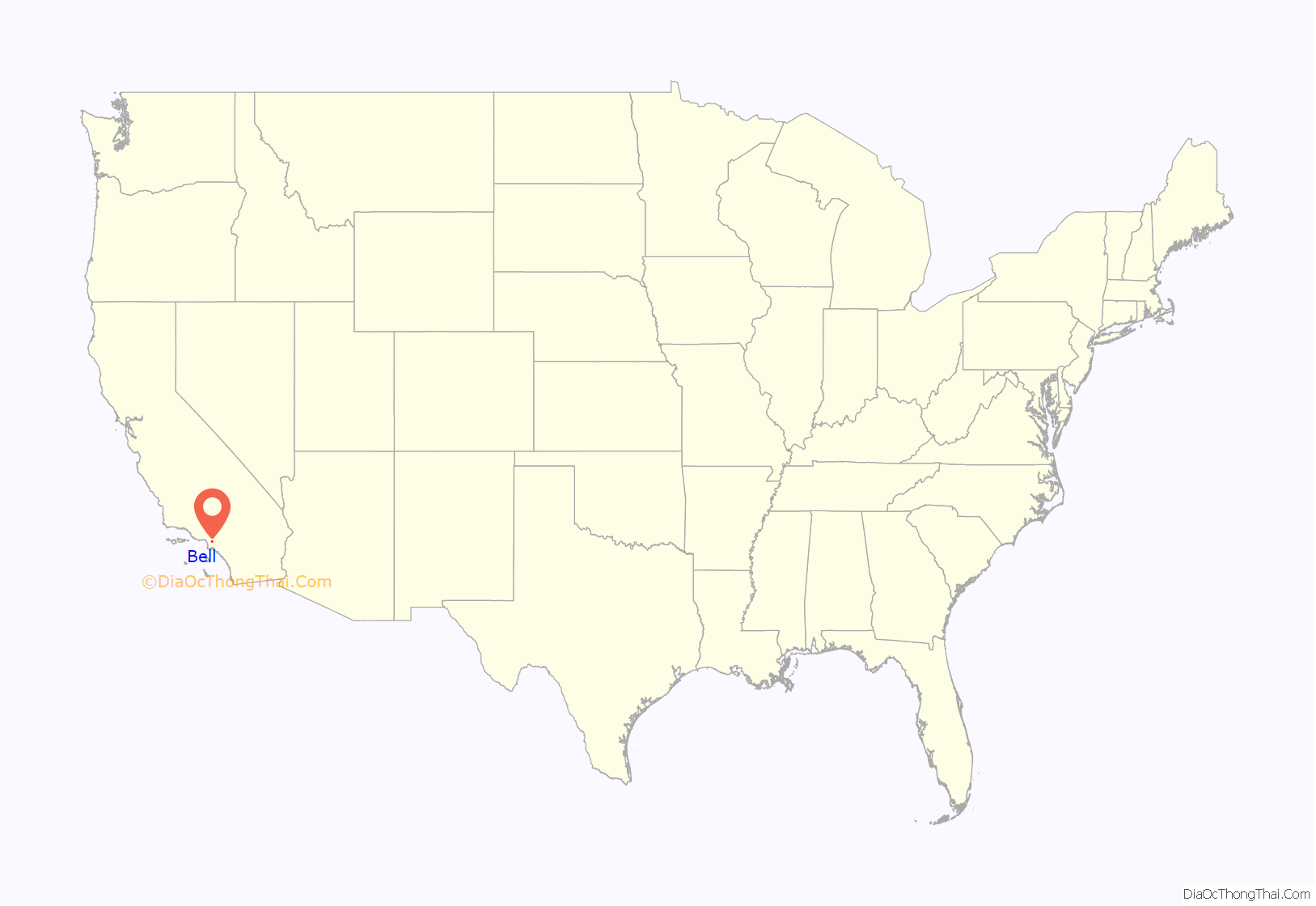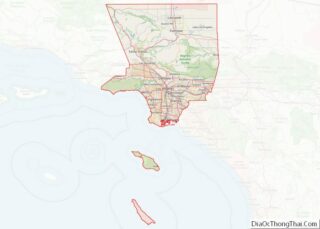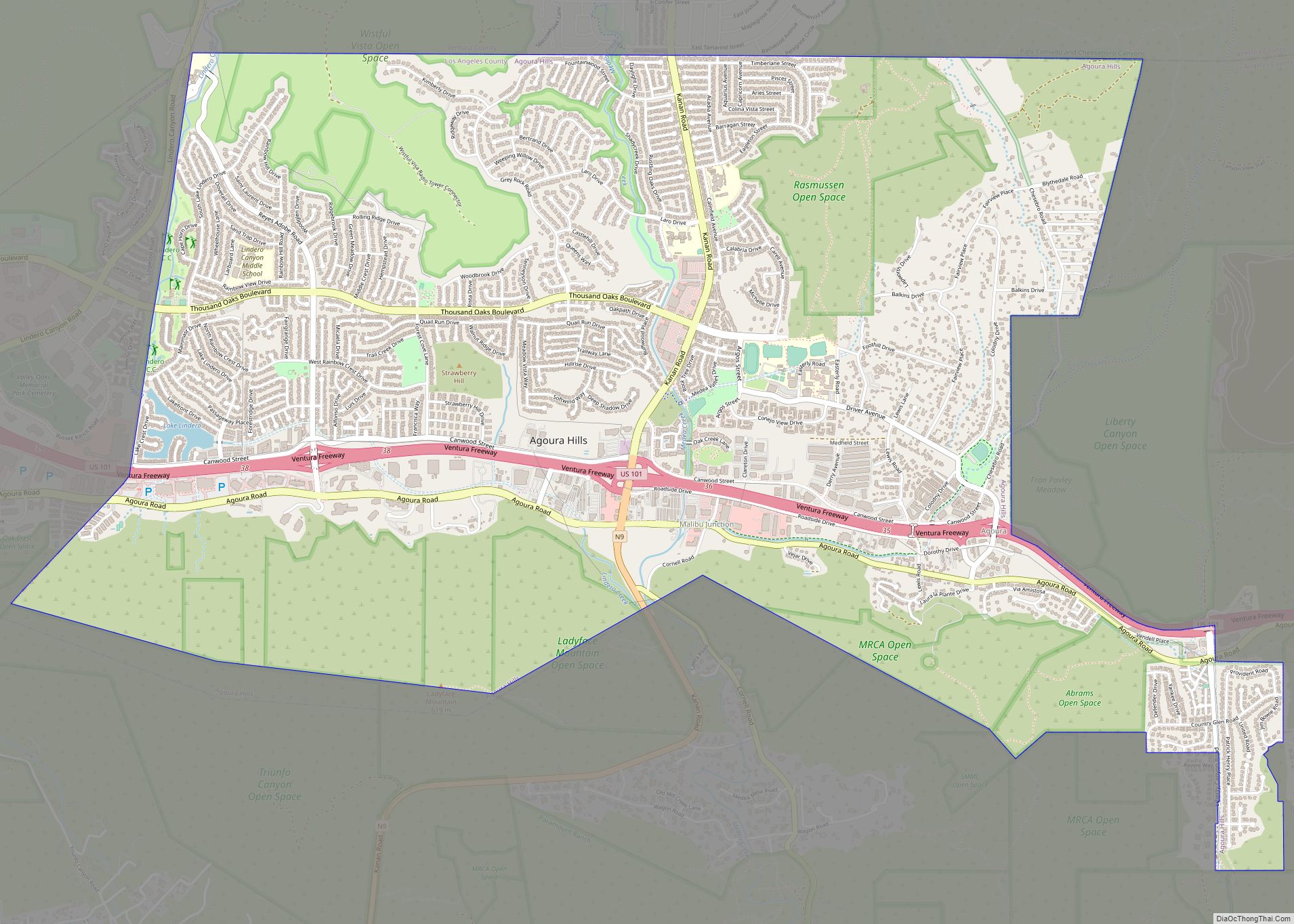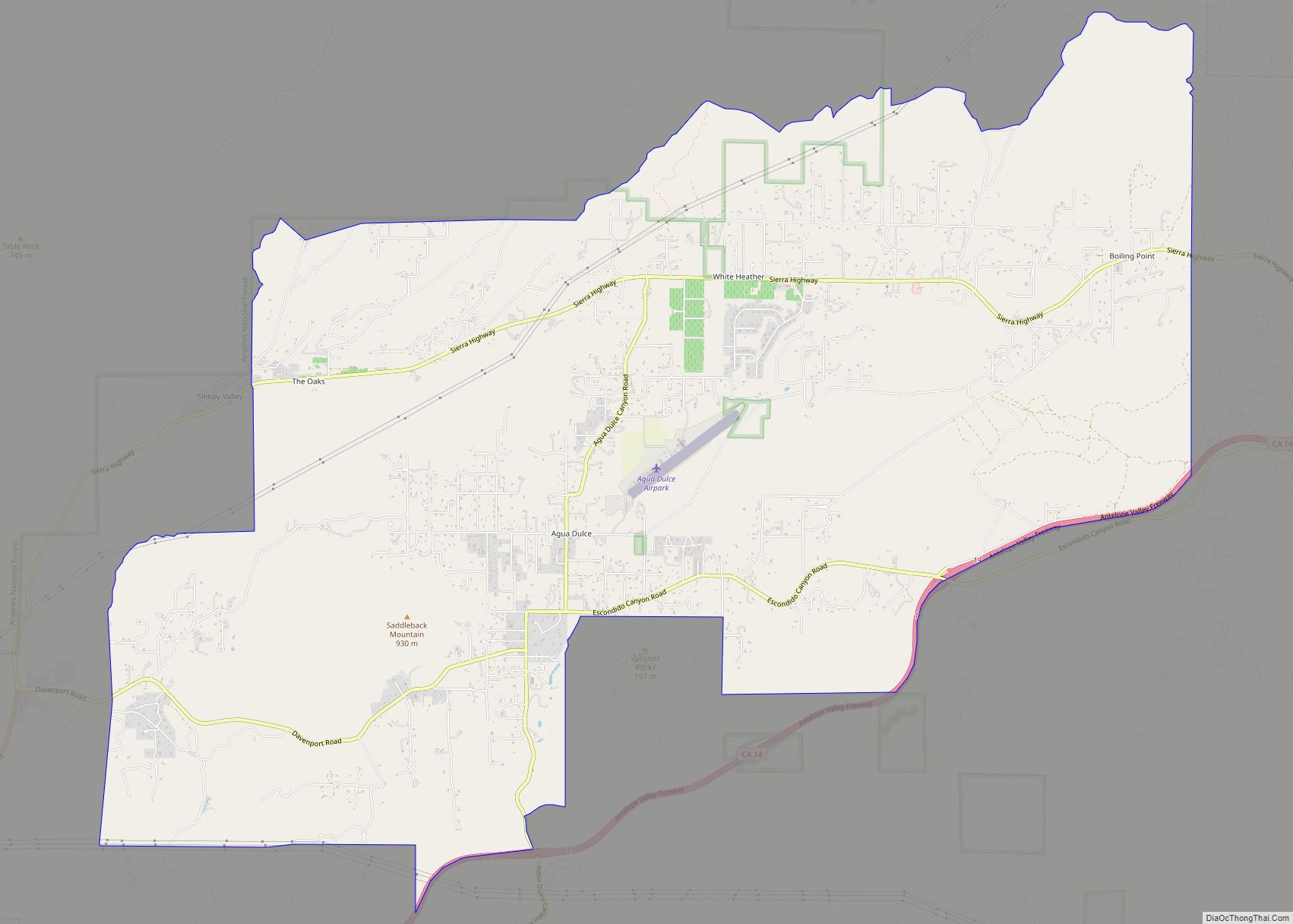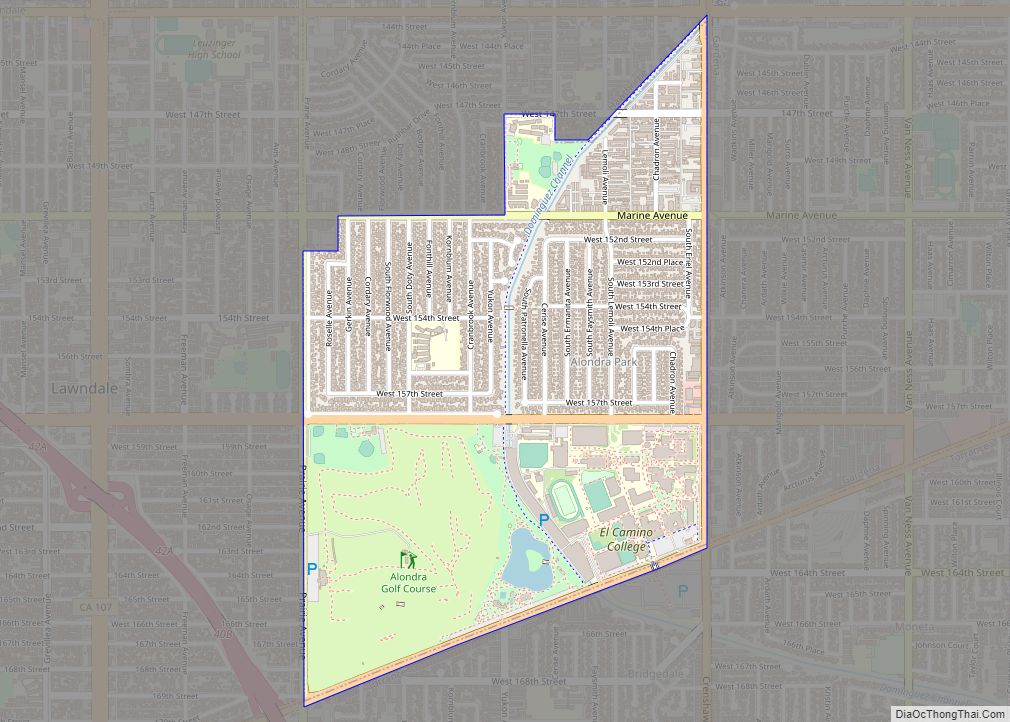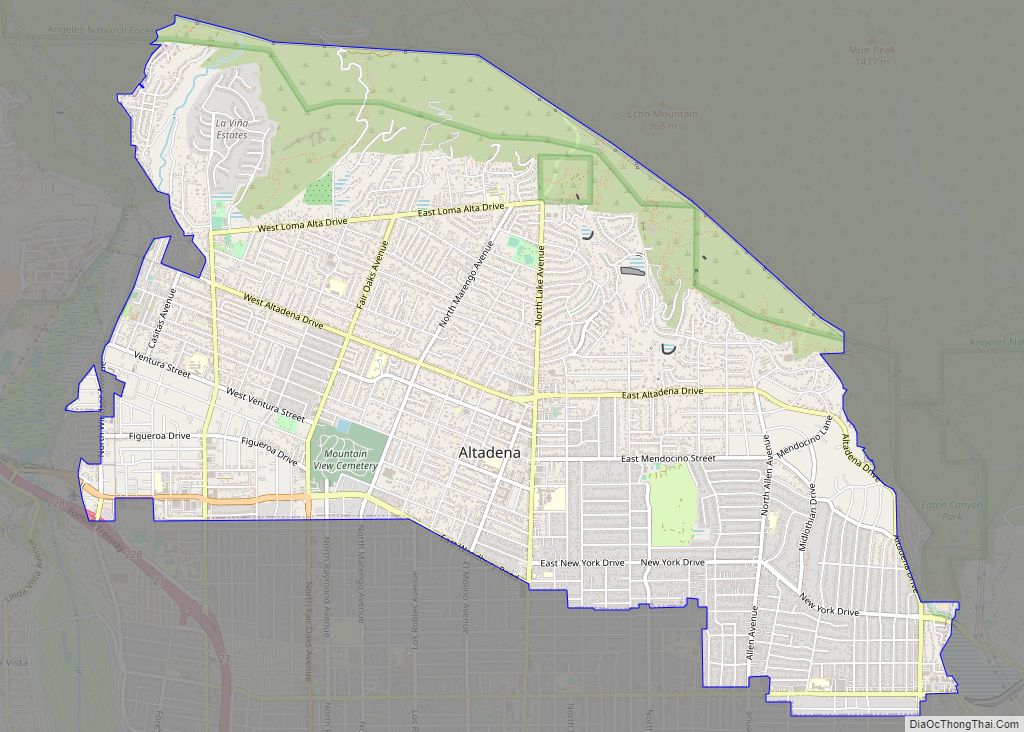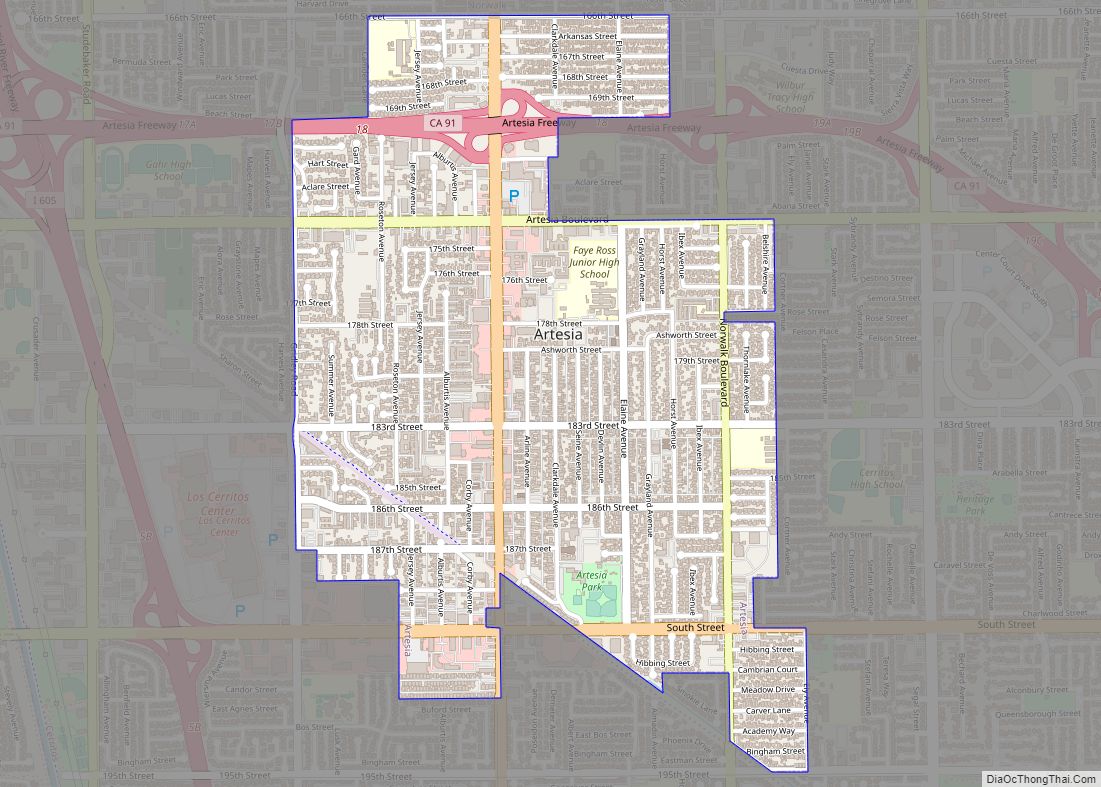Bell is an incorporated city in Los Angeles County, California, near the center of the former San Antonio Township (abolished after 1960). Its population was 35,477 at the 2010 census, down from 36,664 in the 2000 census. Bell is located on the west bank of the Los Angeles River and is a suburb of the city of Los Angeles. At 2.5 square miles (6.5 km), Bell is the thirteenth-smallest city in the United States with a population of at least 25,000.
In 2007, the U.S. Census Bureau ranked Bell’s land area at 1245 out of 1257 cities (defined as incorporated areas) and two unincorporated areas that had a population of at least 25,000 in year 2000. Ten cities in the list of 1267 cities had no land area data (e.g., Goleta, California).
City residents voted to become a charter city in a special municipal election on November 29, 2005. Fewer than 400 voters turned out for that special election. More than half of those votes were dubiously obtained absentee votes. Being a charter city meant that city officials were exempt from state salary caps. A scandal ensued, in which several city officials were indicted for giving themselves extraordinarily high salaries.
| Name: | Bell city |
|---|---|
| LSAD Code: | 25 |
| LSAD Description: | city (suffix) |
| State: | California |
| County: | Los Angeles County |
| Incorporated: | November 7, 1927 |
| Elevation: | 141 ft (43 m) |
| Total Area: | 2.63 sq mi (6.80 km²) |
| Land Area: | 2.51 sq mi (6.50 km²) |
| Water Area: | 0.12 sq mi (0.31 km²) 4.53% |
| Total Population: | 33,559 |
| Population Density: | 13,380.78/sq mi (5,166.23/km²) |
| ZIP code: | 90201, 90202, 90270 |
| Area code: | 323 |
| FIPS code: | 0604870 |
| Website: | www.cityofbell.org |
Online Interactive Map
Click on ![]() to view map in "full screen" mode.
to view map in "full screen" mode.
Bell location map. Where is Bell city?
History
Early history
The area comprising the present-day City of Bell has a Native American history dating back thousands of years. The Gabrieliño Indians migrated to the place now called Bell in 500 B.C. Spaniards have been living in this area of California since the mid-18th century. Among the early Spanish settlers was one of California’s first families, the Lugos.
While stationed at Mission San Antonio de Padua near Salinas, California, Francisco Lugo’s first California son, Antonio María Lugo was born in 1775, who would become Don Antonio María Lugo, Spanish aristocrat and soldier, who settled on 30,000 acres of land that encompasses the present-day City of Bell. In 1810, the king of Spain formally granted the land to Lugo as a reward for his military service and the acreage became known as Rancho San Antonio. Lugo later became the mayor of Los Angeles from 1816 to 1819.
The grant was confirmed by the Mexican governor in 1838. By 1865, the Lugo family’s fortune had dwindled and most of the Rancho was sold for less than a dollar per acre. The Lugo family did manage to retain its home, built about 1810, which is the now oldest house in Los Angeles County. The original adobe house was on Gage Avenue.
Between 1870 and 1890, settlers arrived to the area and among those was the city’s founder. In 1876, the pioneer residents for whom the city is named, James George Bell and his wife Susan Abia Hollenbeck Bell, and their two children, Maude Elizabeth and Alphonzo Sr. moved from Los Angeles where they lived for a short period with Susan’s brother, John Hollenbeck, in their Victorian style home — the Bell House, now a historic landmark located at 4401 East Gage Avenue. On April 6, 2000, the Bell House was dedicated as a California State Historical Resource.
They acquired about 360 acres (145.7 ha) of land and in the next decade, helped in its development as a small farming and cattle raising community. The Bell Family lived at the Hollenbeck’s “Town House” on 4th and Breed Street until they moved into the “ranch” Bell House in 1876. The Bell House was an early Victorian style farm house. In 1898, the town’s name was changed from Rancho San Antonio to Bell, in honor of its pioneer founders.
At the turn of the 20th century, the Bell area was a sparsely settled countryside with a scattering of houses, including the Bell family’s home. Between 1900 and 1915, more people settled into the area. More homes, schools, churches and a library were built, and several small businesses were established by 1913. The citizens agreed to provide all facilities and services for the library, except for the books.
Between 1920 and 1935, an explosive growth in population occurred in the Bell area. Old and new residents built new businesses, established schools, and founded community organizations, such as the Bell Chamber of Commerce and the Woman’s Club. An area-wide sanitation district was formed in 1923 to provide sewer facilities.
In 1924, George O. Wheeler founded the Industrial Post, the local newspaper. By the early 1960s, the Bell Industrial Post had become the Bell-Maywood–Cudahy Industrial Post. It was later renamed the Community News, and became part of the Los Cerritos Community Newspaper Group. In 1998 it was sold again. The Community News disappeared not long after, facilitating a chain of corrupt practiced that ultimately led to criminal convictions for city administrator Robert Rizzo, who had been hired around 1998, and six other Bell city officials.
In 1925, the Alcazar Theater to show “talking pictures”, was opened. It has since been demolished.
In 1926, Bell High School was opened.
Cityhood
Bell was incorporated as a city in 1927. Since its incorporation, the city of Bell has acquired land for public parks and the recreational program. The city also has constructed an adequate sewer system, widened all major streets, built a city hall, and provided fire department buildings, with the cooperation of the city of Maywood and the County of Los Angeles, the city of Bell constructed an indoor public swimming pool at Bell High School.
The city’s Chamber of Commerce is located at the historic James George Bell House, which serves as a meeting place and in addition, a museum showcasing artifacts from the city’s founding family and period furniture. The house is open to the general public with free admission.
In March 2007, the city of Bell held its first contested election for city council in almost a decade. The next election for City Council was held in March 2011, and included the recall of all the city council members save one, who was not re-elected.
Oscar controversy
In March 2000, Bell gained worldwide publicity, as the media announced that a shipment of 55 Oscar statuettes was stolen from a trucking company loading dock in Bell. In addition to the Los Angeles and Bell police departments, FBI art theft experts investigated. It was the second Oscar mishap within a short period, as earlier that month 4,000 Oscar ballots were misrouted. Coincidentally, the missing Oscar ballots were found by the post office in a Bell processing center. AMPAS Executive Director Bruce Davis was quoted as jokingly warning Billy Crystal, host of that year’s Oscar ceremony, not to go near Bell because it “seems to be a Bermuda Triangle for Oscar things”.
2010 city official corruption scandal
In July 2010, when two Los Angeles Times reporters, Jeff Gottlieb and Ruben Vives, were investigating possible malfeasance in the neighboring city of Maywood, it was revealed that Bell city officials were receiving unusually large salaries, perhaps the highest in the United States. The salaries came into the public eye after the newspaper’s investigation, based on California Public Records Act requests, showed that the city payroll was swollen with six- to seven-figure salaries. Robert Rizzo, the City manager, received $787,637 a year, almost double the salary of the President of the United States. Including benefits, he had received $1.5 million in the last year. Rizzo’s assistant, Angela Spaccia, was earning $376,288 a year, more than the top administrator for Los Angeles County. The police chief, Randy Adams, was paid $457,000, 33% more than Los Angeles Police Chief Charlie Beck. All three resigned following news reports and public outcry. All but one of the members of the city council were receiving $100,000 for their part-time work, salaries which were authorized by a sparsely attended special election, giving the city “Charter” status. By comparison, council members in cities similar to Bell in size make an average of $4,800 a year, prosecutors have noted.
In September 2010, the California Attorney General’s office filed a lawsuit against eight former and current City of Bell employees, requesting the return of what the suit calls “excessive salaries” as well a reduction in pension benefits accrued as a result of those higher salaries. Allegations about irregularities in the 2009 election also were examined by the FBI and California Secretary of State office. The city’s high property taxes are also being investigated.
On September 21, 2010, former city manager Robert Rizzo, Mayor Oscar Hernandez, former assistant city manager Angela Spaccia and council members George Mirabal, Teresa Jacobo, Luis Artiga, George Cole and Victor Bello were arrested and charged with misappropriation of public funds. The mayor and council members all either resigned or were recalled. Of the eight, only Luis Artiga was found not guilty. The revelations about the salary amounts paid to city officials in Bell led media inquires into salaries paid in other cities. After a review, the L.A. Times found frequent failures in audits of public agencies in other municipalities in California.
Bell Road Map
Bell city Satellite Map
Geography
According to the United States Census Bureau, the city has a total area of 2.6 square miles (6.7 km), of which 2.5 square miles (6.5 km) is land and 0.1 square miles (0.26 km) is water.
See also
Map of California State and its subdivision:- Alameda
- Alpine
- Amador
- Butte
- Calaveras
- Colusa
- Contra Costa
- Del Norte
- El Dorado
- Fresno
- Glenn
- Humboldt
- Imperial
- Inyo
- Kern
- Kings
- Lake
- Lassen
- Los Angeles
- Madera
- Marin
- Mariposa
- Mendocino
- Merced
- Modoc
- Mono
- Monterey
- Napa
- Nevada
- Orange
- Placer
- Plumas
- Riverside
- Sacramento
- San Benito
- San Bernardino
- San Diego
- San Francisco
- San Joaquin
- San Luis Obispo
- San Mateo
- Santa Barbara
- Santa Clara
- Santa Cruz
- Shasta
- Sierra
- Siskiyou
- Solano
- Sonoma
- Stanislaus
- Sutter
- Tehama
- Trinity
- Tulare
- Tuolumne
- Ventura
- Yolo
- Yuba
- Alabama
- Alaska
- Arizona
- Arkansas
- California
- Colorado
- Connecticut
- Delaware
- District of Columbia
- Florida
- Georgia
- Hawaii
- Idaho
- Illinois
- Indiana
- Iowa
- Kansas
- Kentucky
- Louisiana
- Maine
- Maryland
- Massachusetts
- Michigan
- Minnesota
- Mississippi
- Missouri
- Montana
- Nebraska
- Nevada
- New Hampshire
- New Jersey
- New Mexico
- New York
- North Carolina
- North Dakota
- Ohio
- Oklahoma
- Oregon
- Pennsylvania
- Rhode Island
- South Carolina
- South Dakota
- Tennessee
- Texas
- Utah
- Vermont
- Virginia
- Washington
- West Virginia
- Wisconsin
- Wyoming
